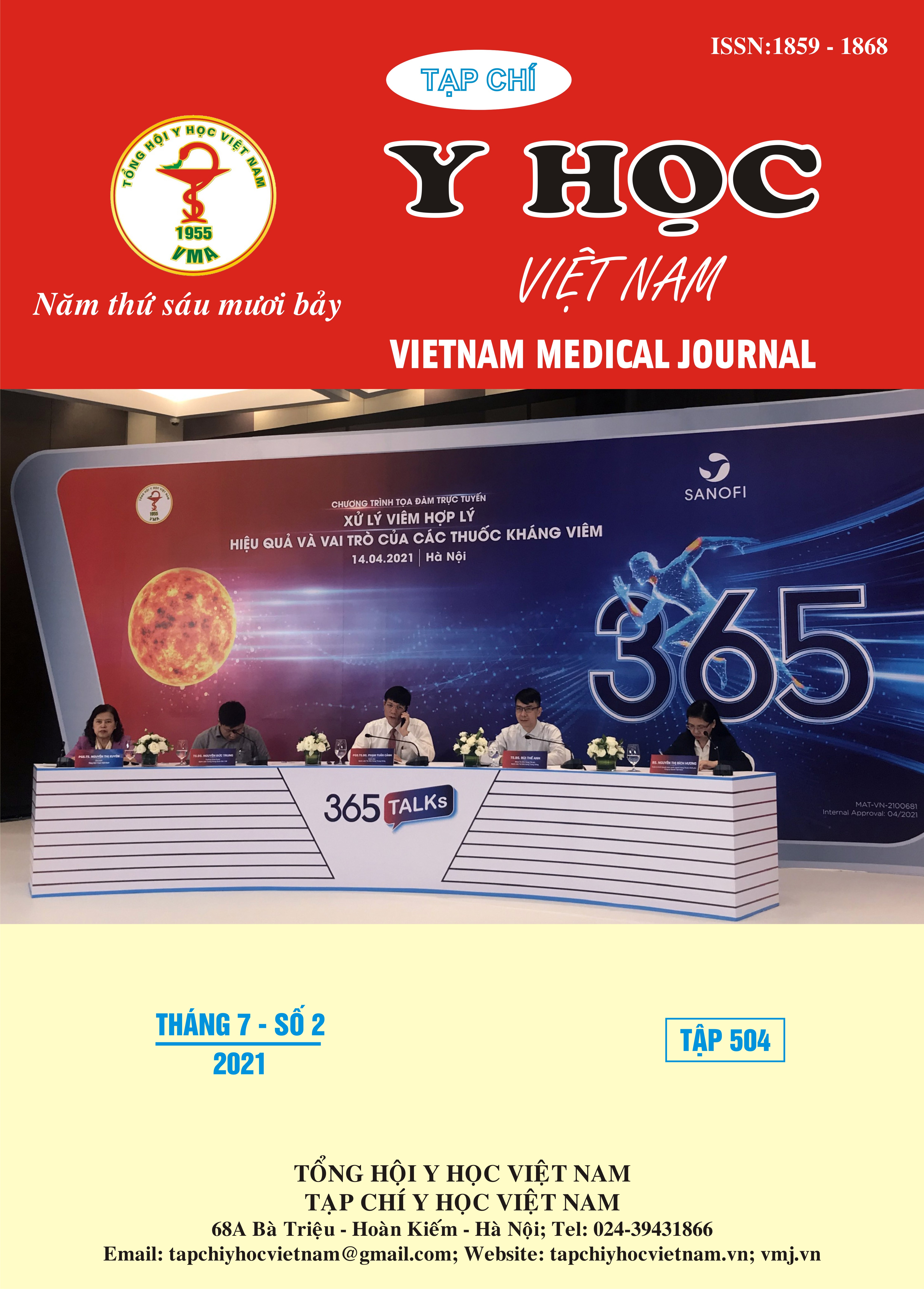SURGICAL OUTCOMES IN TRAUMATIC PENETRATING BRAIN INJURIES AT THAI BINH GENERAL HOSPITAL
Main Article Content
Abstract
Objectives: To evaluate surgical outcomes in traumatic penetrating brain injury injuries at Thai Binh General Hospital. Methods: A descriptive study was undertaken in 39 penetrating traumatic brain injury patients treated at Thai Binh General Hospital from January 2017 to June 2019. Results: 39 patients included 35 males (89, 7%) and 4 females (10.3%); The most common cause was traffic accidents (64.1%), followed by violence (17.9%). Mental status of patients on admission: GCS 8: (75.1%), GCS 9-12: (10.3%), GCS: 13-15 (84.6%). Traumatic cerebrospinal fluid leak (7.7%), brain parenchyma seen at the wound (7.7%). Foreign bodies as soil, sand, hair accounted for 56.4% Intracranial hematoma accompanied by head injury was mainly epidural hematoma 69.2% Treatment outcomes: Good recovery rate achieved 66.7%, mild sequelae: 25.6%, severe sequelae and vegetative state: 5.1%. Conclusion: Considering penetrating traumatic brain injuries in peacetime, the common cause is traffic accidents. Men make up the majority. In treatment of traumatic penetrating brain injuries, patients with associated intracranial hematoma should be paid attention to.
Article Details
Keywords
traumatic penetrating brain injury, traumatic brain injury, nonmissile brain injury
References
2. Võ Tấn Sơn, Dương Thanh Tùng (2004). Vết thương sọ não trong thời bình. Y học TP. Hồ Chí Minh, tập 8, phụ bản số 1, 2004.
3. Nguyễn Vũ Khoa (2005). Nghiên cứu chẩn đoán và thái độ xử trí vết thương sọ não tại bệnh viện Việt Đức. Luận văn tốt nghiệp BSCK2, Trường Đại học Y Hà Nội, 2005.
4. Zhigang Lan, Seidu A Richard, Lu Ma (2018), Nonmissile anterior skull-base penetrating brain injury: Experience with 22 patients. Asian J Neurosurg 2018;13:742-8.
5. Abdelhameid, A.K., Saro, A (2019). Non-missile penetrating brain injuries: cases registry in Sohag University Hospital. Egypt J Neurosurg 34, 24 (2019).


